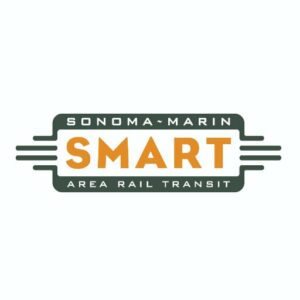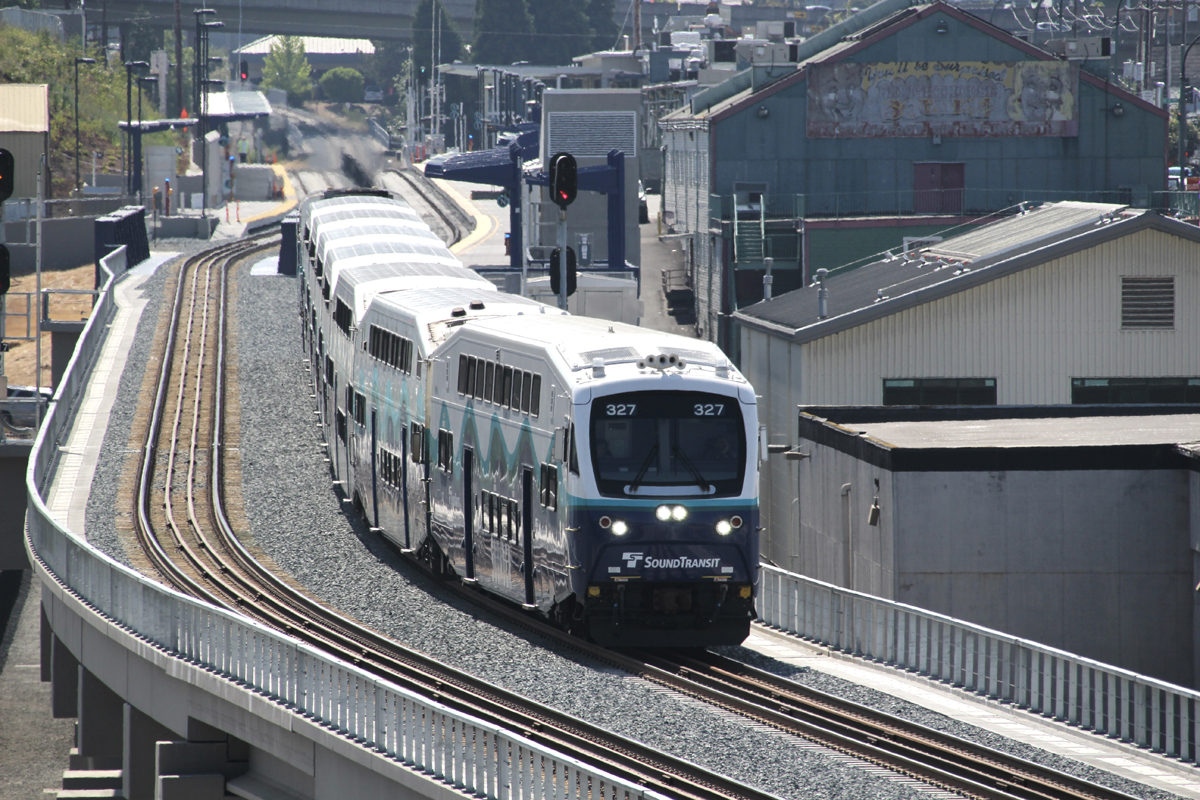Landowners sue SMART, saying use of right-of-way for trail is illegal
 Sonoma-Marin Area Rail Transit is being sued by a group of landowners over the commuter railroad’s use of its right-of-way to build a trackside bike and pedestrian trail. The Santa Rosa Press Democrat reports that the lawsuit filed in U.S. District Court in San Francisco alleges that the predecessor railroads often acquired the right-of-way through government condemnation exclusively for rail use. The group of more than 30 property owners along the rail road says construction of the path constitutes illegal taking of private land. SMART said in a statement it is assessing the claims and “will evaluate all available options.”
Sonoma-Marin Area Rail Transit is being sued by a group of landowners over the commuter railroad’s use of its right-of-way to build a trackside bike and pedestrian trail. The Santa Rosa Press Democrat reports that the lawsuit filed in U.S. District Court in San Francisco alleges that the predecessor railroads often acquired the right-of-way through government condemnation exclusively for rail use. The group of more than 30 property owners along the rail road says construction of the path constitutes illegal taking of private land. SMART said in a statement it is assessing the claims and “will evaluate all available options.”
New seawall, support columns needed to shore up Southern California’s Del Mar Bluffs
Emergency repairs to address the collapse of a section of Southern California’s Del Mar Bluffs will cost about $10.5 million, according to the San Diego Association of Governments. The San Diego Union-Tribune reports a 288-foot seawall, as well as 18 vertical concrete and steel support columns tied into horizontal supports, will be required to stabilize the area which collapsed in February [see “Digest: Train moves okay along Del Mar Bluffs …,” Trains News Wire, March 8, 2021]. Since the collapse, which came within 35 feet of the rail line atop the bluffs, Amtrak passenger trains and Coaster commuter trains have operating with a 15-mph speed restriction through the area. Freight trains face a 10-mph limit.
Mexico’s Navy to receive part ownership of rail, port alternative to Panama Canal
Mexico’s navy will receive part ownership of a rail and port system envisioned as an alternative to the Panama Canal, president Andrés Manuel López Obrador has announced. The Associated Press reports the navy and four states along the route of the Isthmus of Tehuantepec rail and seaport corridor will receive ownership of the 180-mile rail line connecting ports in Veracruz and Oaxaca, which would be expanded. The move follows an earlier decision by López Obrador to give the country’s army operational control of and profits from the Maya Train tourist rail project [see “Digest: Sound Transit to replace fare enforcement …,” Trains News Wire, Dec. 21, 2020].














Also noting the article about that Mexican isthmus and its railway, I doubt this project’s projectors are reviving the old ship railway originally proposed for which engravings exist. A piece in TRAINS on ship railways the world over might prove interesting; the Chignecto Ship Railway in the Maritimes got about 80% built supposedly 1889-1896. While marine railways exist in dockyards and marinas the world over, did any of the classical overland ship railways actually get built and operated?
SMART should have read the deeds when they took over the rail line. If the original railroad had title to the property in fee simple, they own it lock stock and barrel. If, on the other hand, they were cheap and only obtained an easement, the property owners have a valid case. (very few easements list “bike path” as a possible usage of the easement)
Mr, Lampman – You are correct. Click on the local news article, which will give you a link to the actual complaint in the Federal District Court, which complaint alleges that the original taking by condemnation of plaintiffs’ land was for an easement for railroad purposes, not ownership in fee simple, so the plaintiffs continue to own the land under the tracks and the rights granted under the easement have been violated. No doubt just compensation at the time for an easement was substantially less than acquiring the land outright.
It’s called Adverse Possession — over a period of time the railroad claims the property and all subsequent rights by osmosis regardless of how first acquired. This is no different than the homeowners themselves. No human being can claim a clean title to a single square inch of land — because at one point whether it be a hundred yeras ago or a thousand, someone squatted on it and claimed it. When our Loving and Provident God created the land He left it open to whoever would get there first. That person (or tribe, whatever) claimed the land as their own because they kicked everyone else off. So cut to hundreds of years later the railroad owns the property because it owns the property. Or so it says.
Look for some of the same tactics for the disposition of the Santa Cruz branch line that Progressive Rail just walked away from. There is a battle between the commuters and the trail walkers already.
If SMART had followed the 1968 US Rails to Trails Act and included compensation for the trail into their plan, this wouldn’t have happened.
If SMART was smart, they would have declared the path a maintenance or emergency access ROW for their equipment. Then it would have remained officially for railroad use. But the real problem is going to be farther north. Vitners have most definitely encroached on the railroad ROW to eke out yet more grapes for their wineries. Since the rail use had declined, no one noticed, but if SMART is being forced to declare a ROW boundary, there is going to be a lot of “sour grapes” (a ha) with some people.
Re “Landowners sue SMART” – I can sleep soundly now. The day has finally come when the NIMBY’s are ok with the railroad, but not the bike-pedestrian trail. Must be too much noise from those hiking boots and bike tires.
George, I was gonna say the same thing. It’s hard to believe.